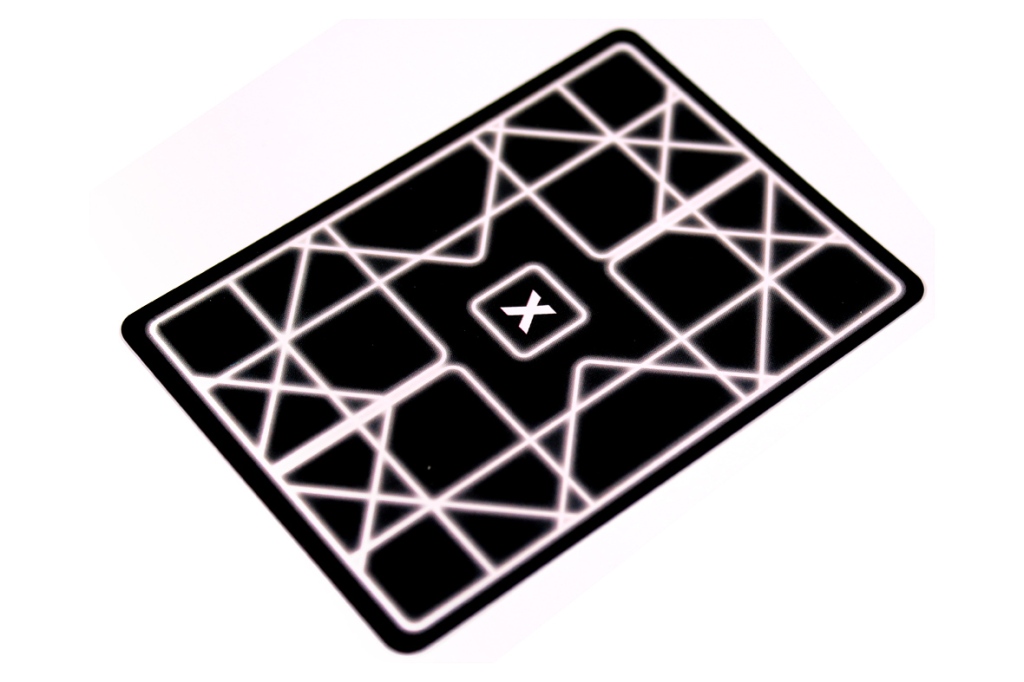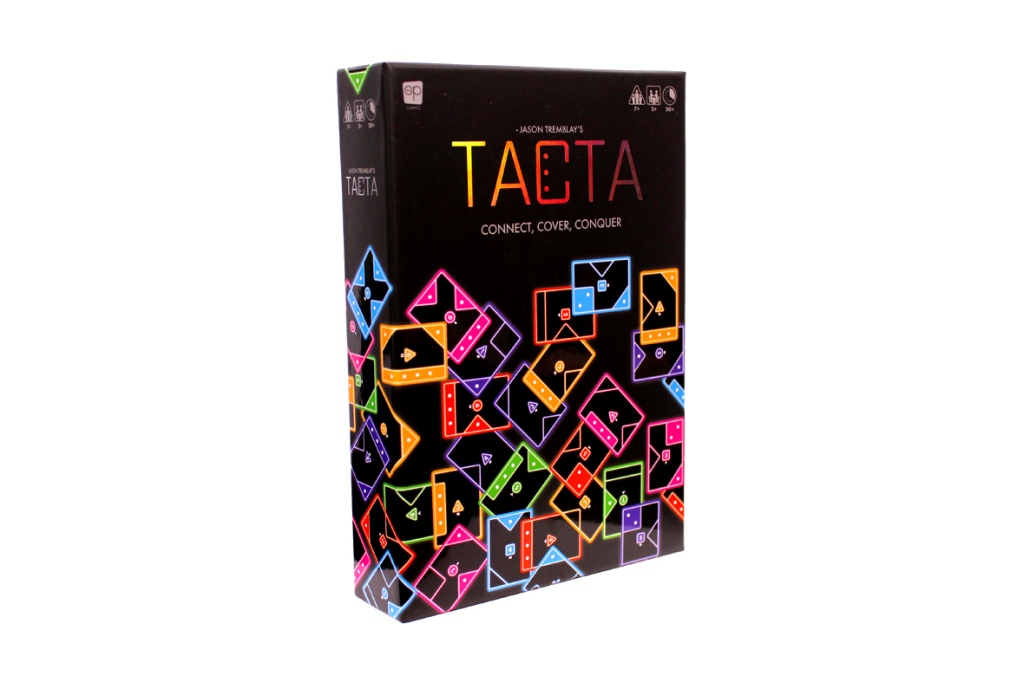
Base price: $20.
2 – 6 players.
Play time: 5 – 15 minutes.
BGG Link
Buy on Amazon (via What’s Eric Playing?)
Logged plays: 1
Full disclosure: A review copy of Tacta was provided by The Op.
Alright, here we go. Memorial Day Weekend! I took a break on Memorial Day once, like, eight years ago. It was nice. And now, more games to review! It’s a process. This week, I’m focusing on two-player games. Why? The way that things go. Time is a flat circle or something. So let’s get into it with Tacta, coming from The Op!
In Tacta, players have one goal: dots! You want more of yours visible than your opponents. Why? Don’t worry about it. You’re compelled by the vibe of it all. However, there’s a catch: your options for play are limited. You can only play a card if it overlaps with another card. You’ll have to work hard and anticipate all the angles if you want to score the most points. Will you be able to light up the board?
Contents
Setup
Basically none. There are a few different sets of cards:

Pick one per player and shuffle it. Keep it in your hands so you can easily access the top and bottom cards of each deque. They call it a stack, but I’m annoying and particular. Place the starting card in the center of the play area:
You should be ready to start!
Gameplay
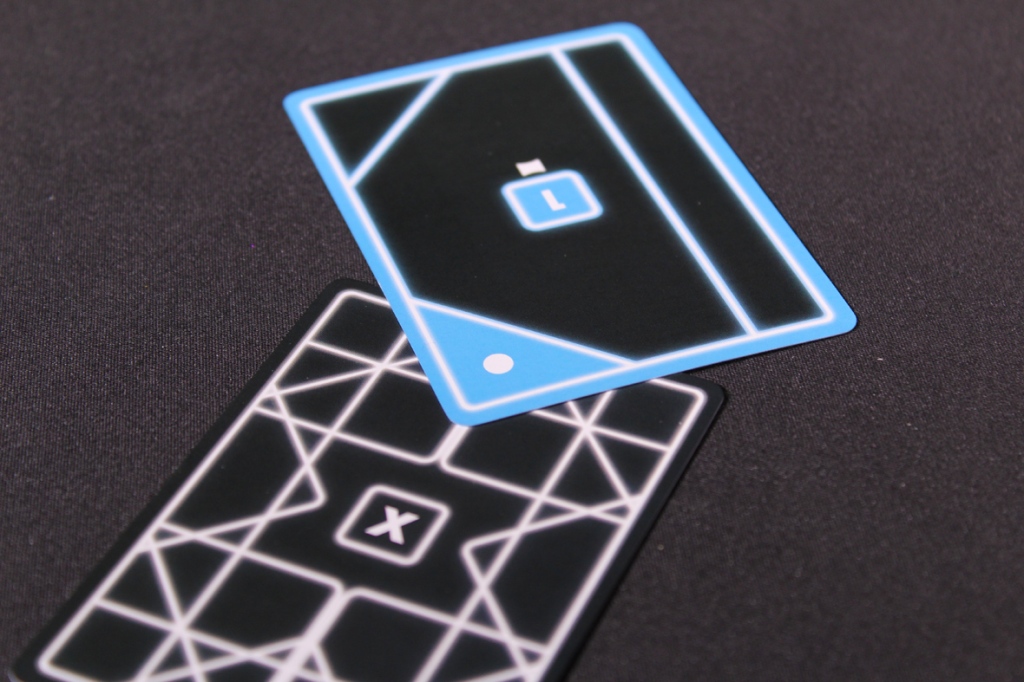
This part’s also pretty easy. Your goal is to have as many of your dots on your cards visible and covering as many of your opponent’s dots as possible.
The player with the lowest number between the top and bottom cards of their deque starts. When you play a card, the shape you place on needs to perfectly cover a shape on the card you’re covering. You can’t touch two cards; only one! Some wiggle room around that though.
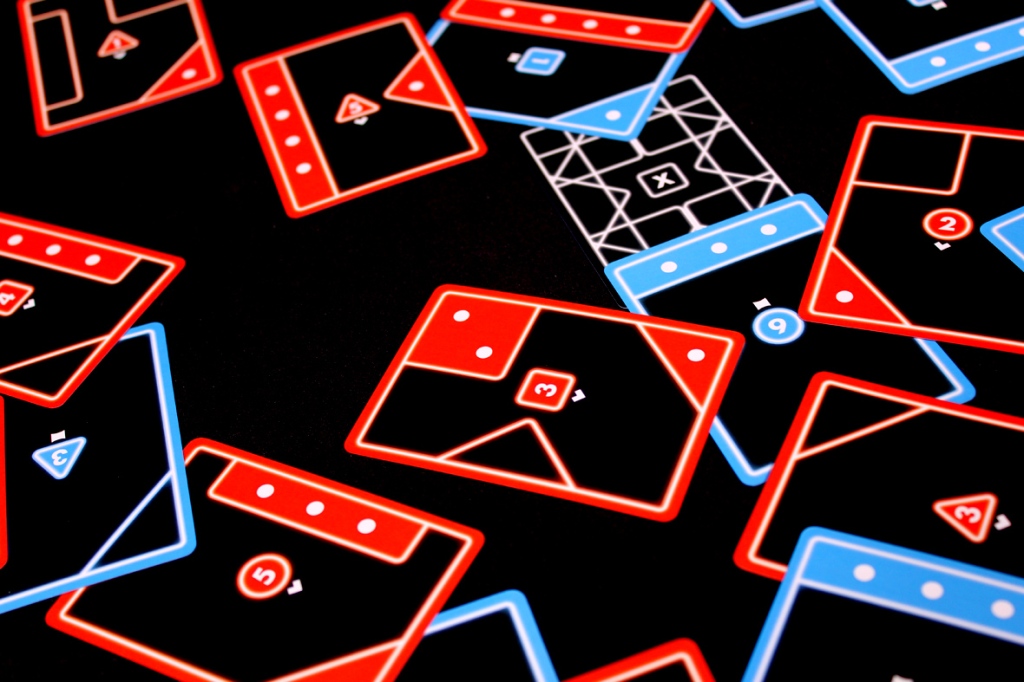
Player can cover any card with one of theirs, as long as they don’t break any of the rules. It’s pretty straightforward! Once every card has been played, the game ends! Total up the dots on each card of your color and compare; the player with the most visible dots wins!
Player Count Differences
It’s a busy week for two-player games, for me. This, however, while fun at two players, really starts to shine as more players get into the mix. The chaos opens up a bunch of different avenues for play and scoring, though you also need a lot of space to play as the number of cards increases with more players as well. The trade-offs become less zero-sum as you need to start covering any cards that have high values instead of focusing on one opponent, and scoring becomes even more impossible to track without a concerted effort. I don’t really think you can at two players, either, but you certainly will struggle at six. As is common here at What’s Eric Playing?, your preference is likely going to depend on your tolerance for this chaos, to some degree. If you want more chaotic play, add more players. If you don’t, keep it at two and go for tactical play instead.
Strategy

- Defend your high-value cards! You don’t want to play 3 or 4 dots such that your opponents immediately cover it. Try playing them on top of your opponents’ cards so that they can’t counter them, or try playing them too close to other cards so that your opponent is stuck just leaving them alone.
- You need to go after high-value spots of your opponents if you want to win. You can’t leave that many of their points uncovered or they’ll outscore you easily. You have to chase them to some degree, but you can’t afford to only pick on one person the whole time or you’ll bring both of you down.
- Use the edge of the play area to your advantage. It’s a defensive play that works out really well: you can’t cover the card without going outside the play area. That leaves your card in place without you having to worry about coming back to defend it later, so it’s the perfect time to play a high-value card.
- You can mirror cards, so flipping them around to play defensively can be good. Flip the card over to get the points you want in the place you want so that you can avoid getting your cards covered.
- One of my friends built a cove for their cards; a handful of cards that make it impossible to play on any of their other cards in a spot. Cool move! That was pretty fun. They mostly curved around to form essentially a point-scoring lagoon where I couldn’t play without covering multiple cards, so they all defended each other. It was a beautiful little community.
- You can use your low-value cards to secure your higher ones or just get some easy points. You have to play them eventually anyways. The low-value cards have a lot of blanks, so they’re pretty flexible. You can use them to space things out, to some degree.
Pros, Mehs, and Cons

Pros
- The neon vibe is really cool. I just like a neon aesthetic; it’s some part of my brain that’s really into vaporwave and synthwave and such. It makes the cards hard to photograph sometimes, but I’m willing to deal with it.
- A very quick pick-up and play game. You just shuffle your color of cards and play them; it’s pretty easy.
- I like the eclectic angular gameplay of it all. The game looks like a wild time on the table. I love angles and the way that the game sort of grows organically, and with even more cards and players it gets super fun and hectic. Real-space games are a lot of fun.
- Relatively simple to score. Just give each player their color to count and another player to check; that’s pretty easy.
- Oh, I appreciate that they double-coded the cards so it’s not purely hinging on color. That feels like a must in this day and age.
Mehs
- It can be a bit difficult at the start to figure out where to place the cards. I think the starting card is just busy. It looks nice and it works eventually, but early it was a lot.
- As the game progresses and player counts increase, I do worry that there will be a pretty big slowdown from players that tend towards analysis paralysis. It’s pure spatial reasoning, with a lot of point optimization and rotations thrown in. It’s pretty rough for players that don’t do well with that, but even more so since there’s also a lot of options for any given turn.
Cons
- The game is surprisingly cheaply made, alas. It’s kind of end-to-end. The cards are particularly thin, to the point that once you’ve shuffled them a few times (since the cards are designed to be flipped) the stack of cards don’t really fit in box tray anymore. Even the card colors don’t match the colors in the rulebook. Realest talk possible: that’s the price you have to pay to keep a game under $20 in these times. It’s frustrating from a game longevity standpoint and all, but them’s the breaks.
Overall: 7.5 / 10
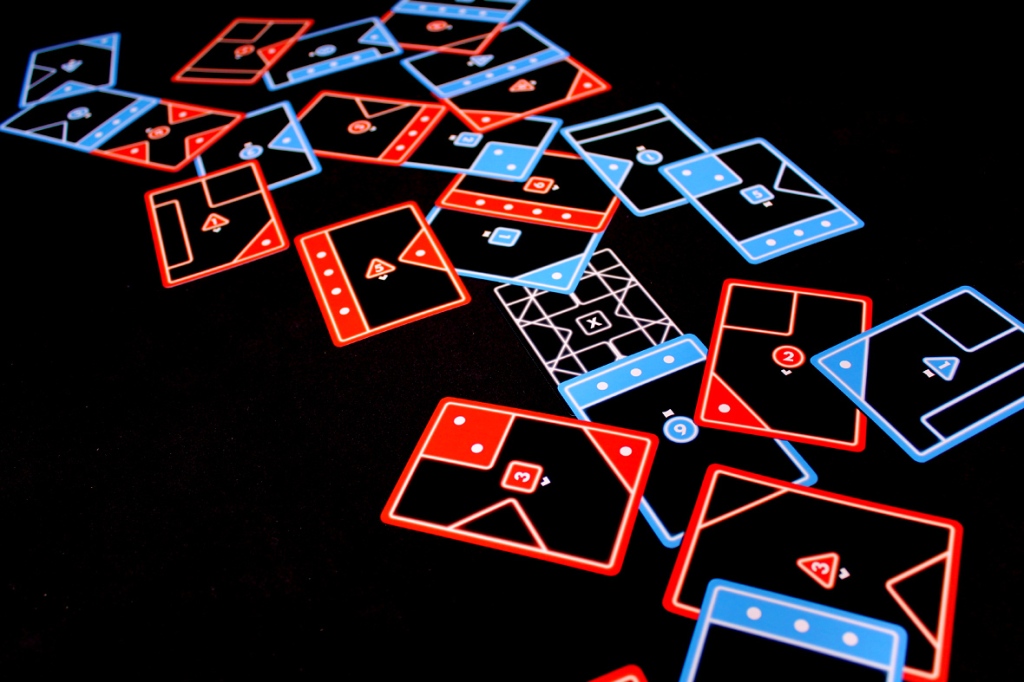
Overall, I think Tacta is fun! This game actually caught my eye a few weeks ago while I was wandering through a game store in West Seattle. The cover caught my eye as a black box with neon colors would. I’m simple. Actually getting to play it was a delight! I do wish the production quality was higher, but there’s not a whole lot of room for a $30 simple card game in the current game market, to be honest. I really like spatial games, and the tactical element of trying to figure out where to play to block your opponent or score more points. Naturally, as the player count increases it gets increasingly chaotic. Suddenly there’s too many possible spots to play and you have to weigh helping yourself and stopping your opponent. It’s very fun. There’s a lot to like about the game as well! Having the table space serve as a natural boundary is clever and easy, and forcing cards to not overlap too much does a great job keeping the play space constantly expanding. Like I said, quick, clever, and fun. I’ve been looking for more of those these days (just experiencing a lot of fatigue but I’m working on it!). If you’re looking for a similar thing, you love spatial reasoning games, or you just want some more neon lights in your games, Tacta might be right up your alley!
If you enjoyed this review and would like to support What’s Eric Playing? in the future, please check out my Patreon. Thanks for reading!

